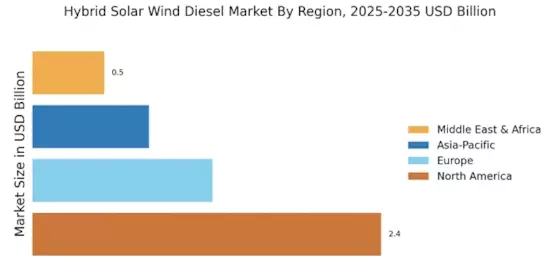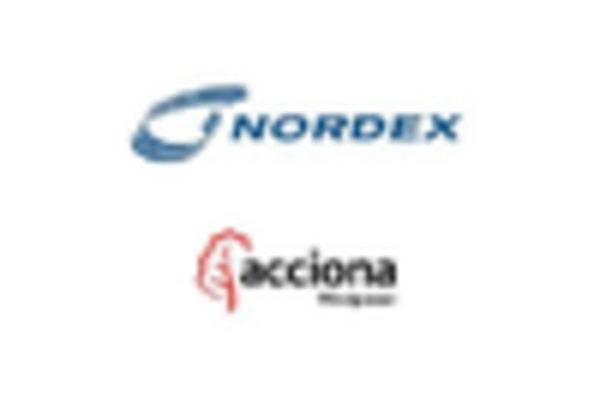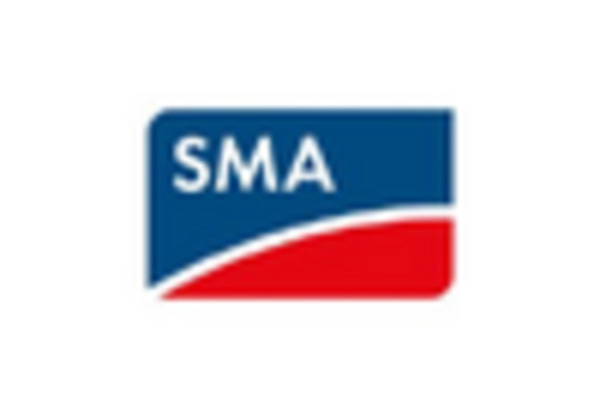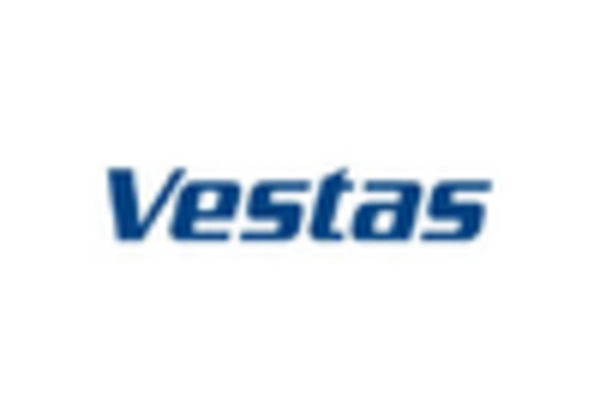Increasing Energy Security Concerns
Energy security remains a critical concern for many regions, driving interest in the Hybrid Solar Wind Diesel Market. The volatility of fossil fuel prices and geopolitical tensions can disrupt energy supplies, prompting a shift towards more stable and diversified energy sources. Hybrid systems, which combine solar, wind, and diesel power, offer a reliable solution that can mitigate risks associated with energy dependence. By utilizing locally available renewable resources, these systems enhance energy resilience and reduce vulnerability to external shocks. The market for hybrid solutions is projected to grow as countries prioritize energy independence and sustainability, indicating a robust future for the Hybrid Solar Wind Diesel Market.
Growing Awareness of Climate Change Impacts
The growing awareness of climate change impacts is significantly influencing the Hybrid Solar Wind Diesel Market. As the effects of climate change become more pronounced, there is a heightened urgency to transition towards low-carbon energy solutions. Public and private sectors are increasingly recognizing the importance of reducing greenhouse gas emissions, which is driving the adoption of hybrid energy systems. The hybrid approach not only reduces reliance on fossil fuels but also enhances the overall sustainability of energy production. This shift in awareness is likely to catalyze further investments in the Hybrid Solar Wind Diesel Market, as stakeholders seek to align their operations with global sustainability goals.
Government Support and Regulatory Frameworks
Government support and regulatory frameworks are instrumental in propelling the Hybrid Solar Wind Diesel Market forward. Many governments are implementing policies that promote renewable energy adoption, including tax incentives, grants, and subsidies for hybrid systems. For example, certain regions have established feed-in tariffs that guarantee fixed payments for energy produced from renewable sources. Such initiatives not only encourage investment in hybrid technologies but also create a favorable environment for research and development. As regulatory frameworks evolve to support cleaner energy solutions, the Hybrid Solar Wind Diesel Market is likely to benefit from increased funding and market opportunities, fostering growth and innovation.
Technological Advancements in Hybrid Systems
Technological advancements play a pivotal role in shaping the Hybrid Solar Wind Diesel Market. Innovations in energy management systems, battery storage, and hybrid control technologies are enhancing the efficiency and reliability of these systems. For instance, the development of smart grid technologies allows for better integration of renewable sources, optimizing energy production and consumption. Additionally, improvements in battery technology are enabling longer storage durations, which is crucial for balancing supply and demand. As these technologies continue to evolve, they are expected to lower operational costs and improve the overall performance of hybrid systems. This trend suggests a promising future for the Hybrid Solar Wind Diesel Market, as more stakeholders recognize the benefits of adopting advanced hybrid solutions.
Rising Demand for Sustainable Energy Solutions
The Hybrid Solar Wind Diesel Market is experiencing a notable surge in demand for sustainable energy solutions. As environmental concerns escalate, consumers and businesses alike are increasingly seeking alternatives to fossil fuels. This shift is evidenced by a projected increase in renewable energy investments, which are expected to reach approximately 2 trillion USD by 2030. The integration of solar and wind technologies with diesel generators offers a compelling solution, allowing for reduced carbon emissions and enhanced energy security. Furthermore, the hybrid systems can operate efficiently in remote areas where grid access is limited, thus expanding their market potential. This growing inclination towards sustainability is likely to drive innovation and investment within the Hybrid Solar Wind Diesel Market, fostering a more resilient energy landscape.


















Leave a Comment